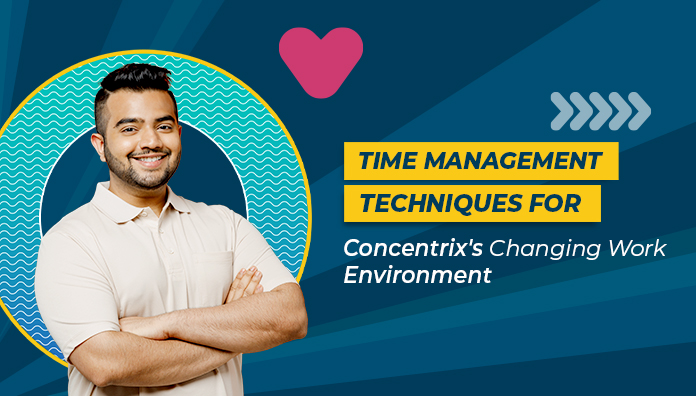Given my experience navigating the always changing modern workplace, I can say with confidence that time management is an irreplaceable corporate skill, particularly in a setting as dynamic as Concentrix. Over the years, I've realised how to effectively manage the different aspects of my role. The following techniques have helped me keep organized, and I hope they will do the same for you:
1. Adopt Flexibility While Maintaining Structure
Combining flexibility and structure is essential for success in a dynamic, fast-paced workplace. Having a strong foundation with flexibility, in my opinion, is one of the best strategies to stay ahead.
For example, I schedule my day with the necessities—things that need to get done—but also leave room for unforeseen circumstances or requests. I have a "buffer zone" for such unforeseen surprises, but I usually begin my day with a prioritised to-do list. I avoid being anxious when things suddenly change by keeping some chores in the back pocket. When you're ready to change course, flexibility becomes your finest ally.
2. Time Blocking's Power
For me, this has changed everything. It's amazing how much more productive I feel when I stick to the time blocking approach, which entails allocating specified time blocks to particular tasks.
I frequently set out time for uninterrupted, concentrated work when working on different client assignments. At this point, I stop checking my emails and attending meetings in favor of getting right to the heart of the project. However, I also make sure to schedule time for equally crucial activities like brainstorming sessions and team cooperation.
I've been able to cut down on distractions and improve my time management by setting clear boundaries for when I'm available and when I'm focused.
3. Stay Connected with Technology Without Feeling Overwhelmed
Communication tools are essential because Concentrix is all about maintaining relationships with teams and clients around the world. We get emails, messages, and updates all the time. However, I've discovered that establishing limits on my use of technology is essential to ensuring that it works for me rather than against me.
For instance, I turn off my email alerts for a few hours each day so that I can concentrate on finishing a task without being distracted by new messages. Slack is another service I use to communicate effectively, although while I'm focused on a high-priority issue, I turn off non-urgent messages. This keeps me connected while allowing me to concentrate.
4. Setting Priorities Using the Pareto Principle's 80/20 Rule
It's simple to get caught up in the trap of overcommitting when every activity seems vital. I therefore use the 80/20 rule, sometimes referred to as the Pareto Principle, to help me concentrate on the activities that will have the biggest impact.
The concept is straightforward: 20% of your efforts get 80% of the results. When presented with a lengthy list of duties, I begin by determining which ones would most significantly affect the client or the firm. This enables me to efficiently set priorities and make sure I'm not squandering time on unimportant chores. At Concentrix, where customer happiness is crucial, the 80/20 rule assists me in determining which chores will advance projects and create the most value.
One example is when I’m working on a client project with a tight deadline. I’ll focus first on the critical milestones that need to be completed, and leave lower-priority items for later. This allows me to make the most of my time and ensure I’m making meaningful progress on the things that matter most.
5. Taking Recharge Breaks
It's simple to believe that perseverance is the secret to success in a high-pressure setting. However, I've learned over the years that maintaining attention is only as crucial as taking regular rests. When I don't get enough sleep, I become less focused and productive, and my work becomes of lower quality.
There is more to taking breaks than simply getting up from your desk to browse social media. Rather, I take use of my breaks to rejuvenate both my body and mind. I find that even a 10-minute break can help me regain focus, whether it's taking a stroll, getting a coffee, or stretching.
6. Consistently Reflect and Modify
The last tactic I do to maintain my time management skills is to routinely evaluate what is and is not working. I set aside time at the end of each week to evaluate my priorities, look over my progress, and pinpoint any areas that need improvement.
I may modify my strategy in response to the evolving needs of my work at Concentrix thanks to this reflection. I may improve my time management technique and maintain my flexibility in the face of changing demands by consistently adjusting my tactics and getting input from my coworkers.







